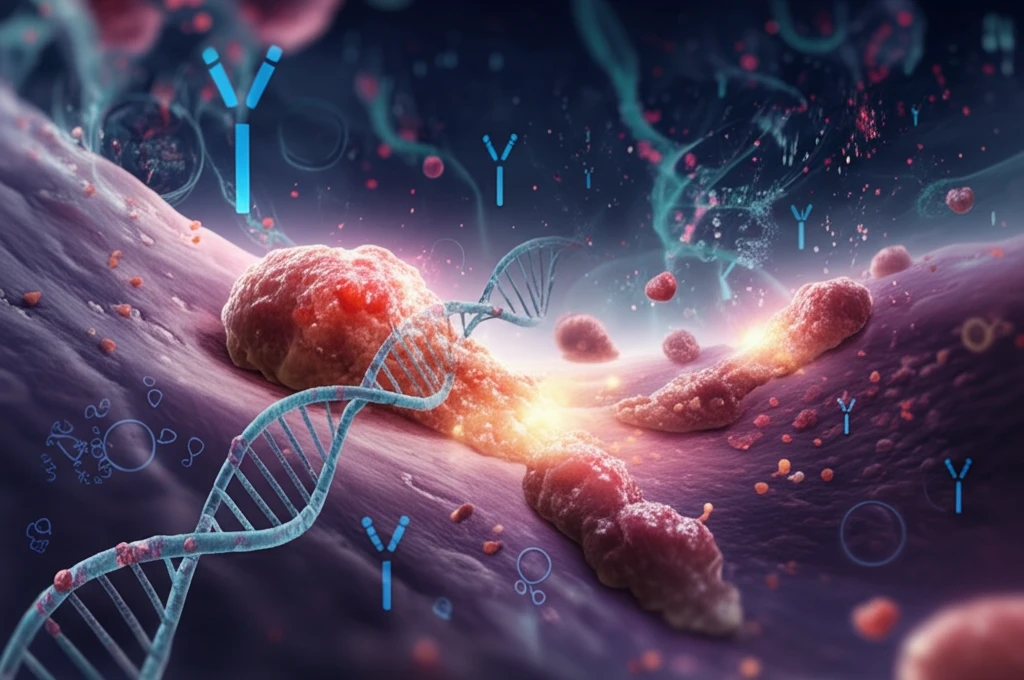
Unlocking the Mysteries of Liver Cancer: A Comprehensive Guide to Histopathology and Diagnosis
"Navigating the complexities of hepatocellular carcinoma through histopathology, biomarkers, and the latest WHO classifications"
Hepatocellular carcinoma (HCC), a primary malignancy of the liver, stands as the sixth most prevalent cancer globally, marked by a concerningly high mortality rate and an escalating incidence. This malignancy's roots are often entwined with factors such as environmental exposures, dietary habits, and lifestyle choices. While HCC predominantly arises in livers already scarred by cirrhosis, a noteworthy shift has emerged: an increasing proportion of cases are now developing in livers with minimal or no fibrosis, signaling a change in the underlying causes and requiring updated diagnostic approaches.
The evolving landscape of HCC presents new challenges for pathologists. Traditional diagnostic criteria, while effective for progressed HCC, often fall short when dealing with small, early-stage lesions. These nascent tumors, frequently detected through routine screening programs, demand a more nuanced diagnostic approach. Adding complexity, recent reclassifications by the World Health Organization (WHO) have redefined lesions previously thought to originate from progenitor cells, necessitating a thorough understanding of these changes.
This article delves into the histopathology of HCC, summarizing recent advancements and contextualizing novel HCC biomarkers within the framework of the latest WHO reclassifications. Furthermore, it addresses the unique characteristics of combined hepatocellular-cholangiocellular carcinomas, offering a comprehensive overview of the diagnostic considerations for this complex malignancy.
Decoding HCC: From Precursor Lesions to Histologic Grading

The journey of HCC often begins with precursor lesions, subtle changes within the liver that may or may not progress to full-blown cancer. Hepatocellular adenomas (HCAs), benign tumors of the liver, can, in rare instances, transform into HCC. These adenomas are more frequently observed in women using oral contraceptives, individuals with glycogen storage disease, or those undergoing androgen treatment. Metabolic syndrome has also emerged as a significant risk factor for HCA development. Differentiating between HCA and well-differentiated HCC, especially in non-cirrhotic livers, can be particularly challenging, requiring careful assessment of architectural and cytological features.
- Dysplastic Foci: Small clusters of atypical cells with uniform morphology.
- Low-Grade Dysplastic Nodules: Minimal abnormalities with slight cellular changes.
- High-Grade Dysplastic Nodules: More pronounced cellular abnormalities, indicating a higher risk of progression.
- HCC: Definite malignant transformation with distinct invasive characteristics.
The Future of HCC Diagnostics
The ongoing refinement of diagnostic criteria, coupled with the discovery of novel biomarkers and a deeper understanding of the molecular underpinnings of HCC, promises to improve early detection, risk stratification, and personalized treatment strategies for this challenging malignancy. As research continues and technology advances, we can anticipate even more precise and effective approaches to combating liver cancer in the years to come.
